How to Optimise Your Website for SEO: Complete Beginner’s Guide
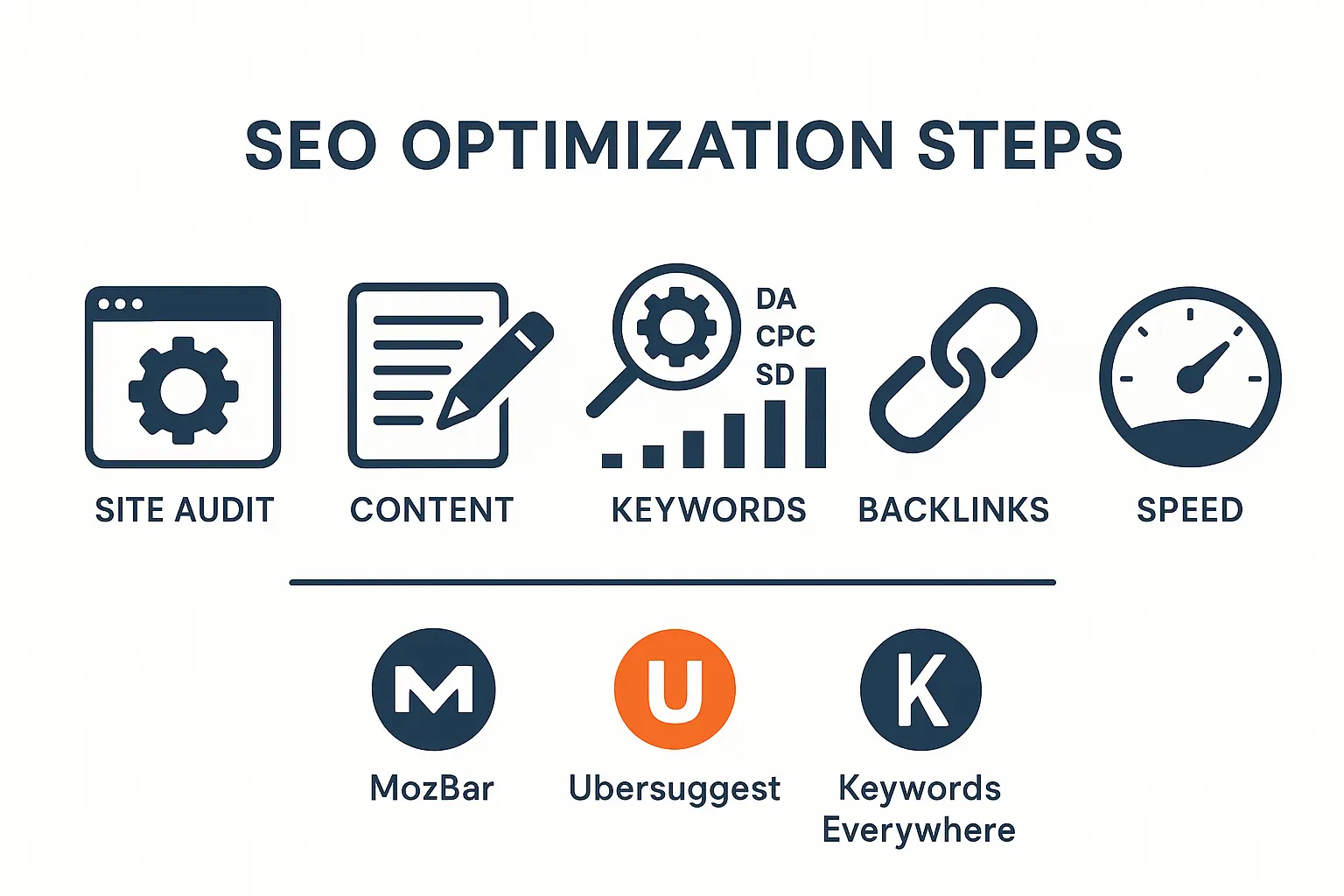
Imagine you’ve built a great website — but no one visits it. It looks beautiful, but Google barely notices. That’s where SEO optimisation comes in. Search Engine Optimisation isn’t about tricks — it’s about making your website visible, valuable, and fast for both users and search engines. Whether you’re a small business owner or a creator, optimising your site’s SEO helps you reach more people organically — without paying for ads. In this guide, we’ll break down how to check if your website is SEO-friendly, tools you can use, and how to understand key SEO metrics like DA, CPC, and more.
What Makes a Website SEO-Friendly?
An SEO-friendly website helps Google (and people) understand your content easily. Think of it as building a house with clear rooms, good lighting, and a signboard outside.
Key signs your site is SEO-friendly:
- Loads fast (under 3 seconds).
- Mobile-friendly and responsive.
- Uses proper title tags and meta descriptions.
- Includes clean URLs (e.g., /about-us not /, page?id=123).
- Content uses relevant keywords naturally.
- Has backlinks from trusted websites.
- Structured navigation and internal links.
When all these work together, your site gains visibility, traffic, and trust.
Step-by-Step: How to Optimise Your Website for SEO
1. Audit Your Current Website
Before fixing anything, you need to know what’s wrong. Use tools like:
- Google Search Console → Check how your site appears on search results and fix errors.
- Google PageSpeed Insights → Test your site’s speed and mobile performance.
- Ubersuggest / SEMrush Site Audit → Find broken links, missing tags, or duplicate content.
Action: Run an audit once a month. Small improvements compound over time.
2. Optimise Your On-Page SEO
These are the elements within your website that you can control:
- Title Tag → Keep it under 60 characters and add your main keyword.
- Meta Description → Under 160 characters; summarise your content with a CTA.
- Headings (H1–H3) → Use keywords naturally in subheadings.
- Image Alt Text → Describe images for accessibility and SEO.
- Internal Linking → Link to your other pages to build site structure.
- URL Structure → Short, keyword-rich, and clean.
Example:
❌ Bad: www.yoursite.com/page?id=56
✅ Good: www.yoursite.com/seo-optimization-tips
3. Content Optimisation (Keywords Matter)
Content is the fuel of SEO. Write content that matches what people search for.
Use free tools to find keywords:
- Ubersuggest (Free) → Gives keyword volume, CPC, and SEO difficulty.
- Keyword Surfer (Chrome Extension) → Shows search volume directly in Google.
- Keywords Everywhere (Freemium Extension) → Displays CPC, competition, and trend graphs.
Focus on long-tail keywords (like “how to optimise website for SEO”) — they bring targeted visitors ready to take action.
4. Understand Key SEO Metrics (DA, PA, CPC, etc.)
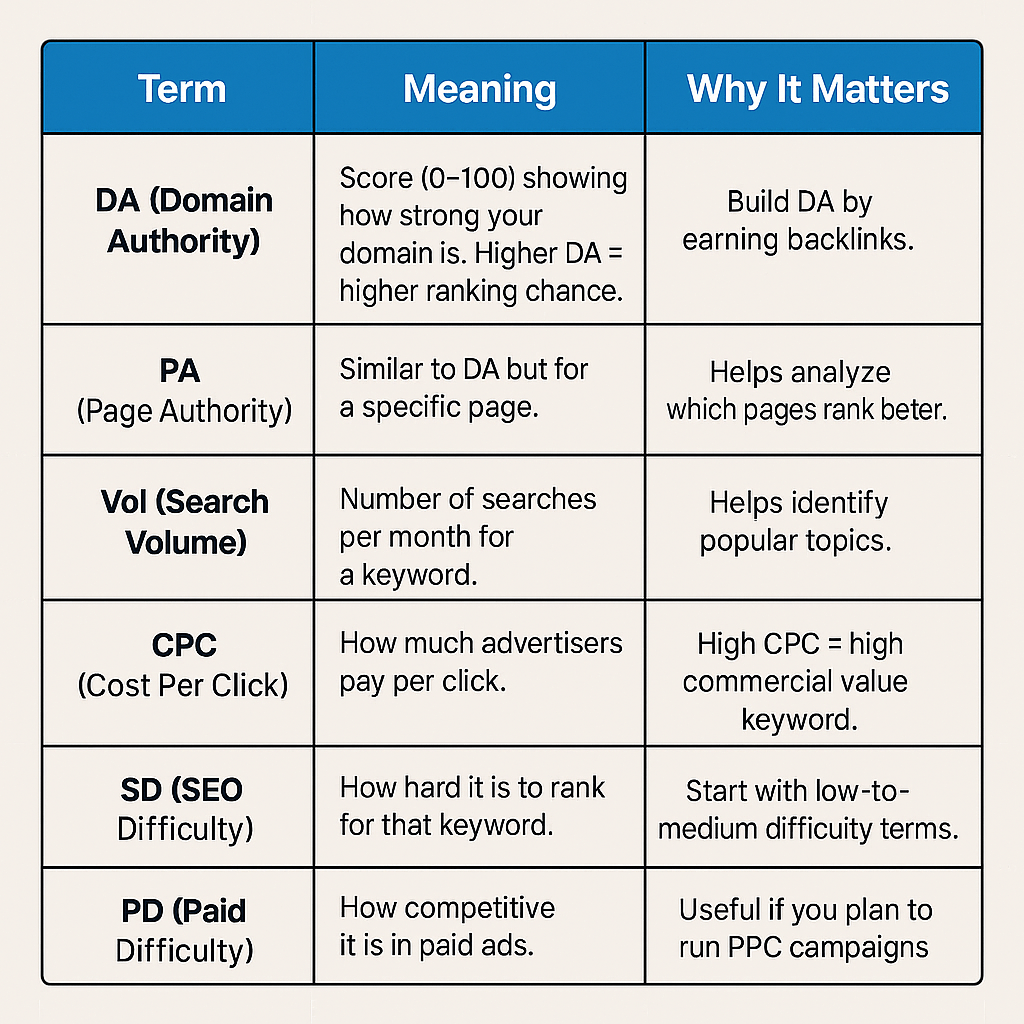
5. Build Backlinks (Off-Page SEO)
Backlinks = Votes of trust. The more trusted sites that link to you, the better your site ranks.
Free ways to build backlinks:
- Guest post on industry blogs.
- List your business on directories.
- Share valuable resources on LinkedIn, Quora, or Reddit.
- Create shareable infographics.
Pro Tip: Use tools like Ahrefs Backlink Checker (Free) or Ubersuggest to analyse who’s linking to your site.
6. Improve Website Speed & Mobile Friendliness
Speed has a direct impact on both SEO and user experience.
- Use PageSpeed Insights or GTmetrix to test.
- Compress images (use TinyPNG).
- Use browser caching.
- Enable lazy loading for videos and images.
- Select a reliable, fast hosting provider.
- Use Cloudflare CDN for global performance.
Google rewards faster, mobile-optimised websites with better rankings.
7. Leverage Free Chrome Extensions for SEO
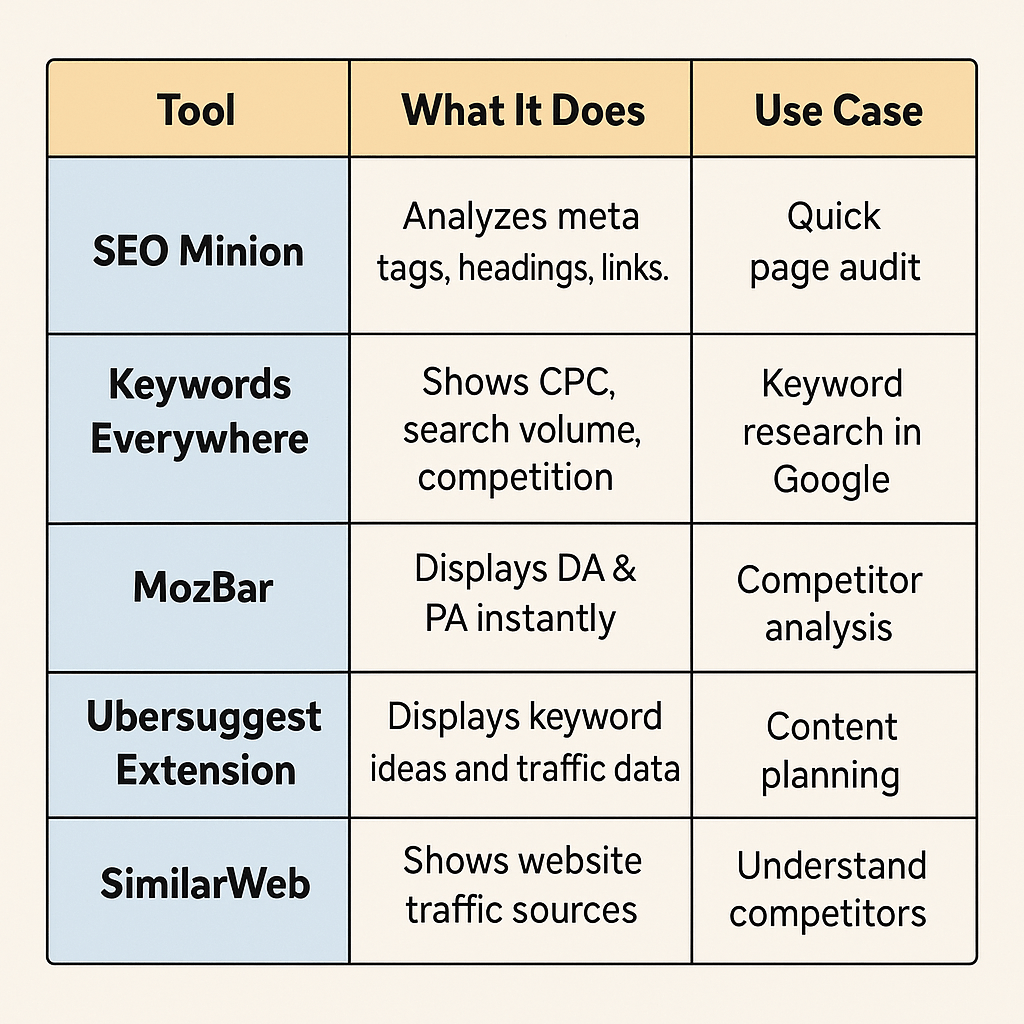
8. Use Schema Markup (Bonus Tip)
Schema helps search engines understand your content type — articles, products, recipes, FAQs, etc.
Use the Google Structured Data Markup Helper to create it easily.
Example: If you have product pages, add schema for price, rating, and availability — it boosts click-through rate (CTR) on search results.
Recommended Free SEO Tools
Here’s a curated list to get started — no credit card needed:
- 🔍 Google Search Console – See search performance & indexing issues.
- ⚡ PageSpeed Insights – Check speed, core web vitals, and mobile usability.
- 📊 Ubersuggest – Keyword ideas, site audits, and backlink data.
- 📈 MozBar – View DA/PA and link insights.
- 📋 Keywords Everywhere – Keyword metrics directly on Google.
- 🧭 AnswerThePublic – Find user questions around a topic.
- 💡 GTmetrix – Test loading performance in detail.
Conclusion
SEO isn’t a one-time job — it’s a routine that keeps your website healthy and visible. Start with free tools, fix technical issues, use the right keywords, and measure progress. Over time, you’ll notice more clicks, better engagement, and consistent traffic.
Run a free site audit today using Ubersuggest or Google Search Console. Check your DA, improve your speed, and optimise one page at a time. That’s how you build SEO momentum that lasts.
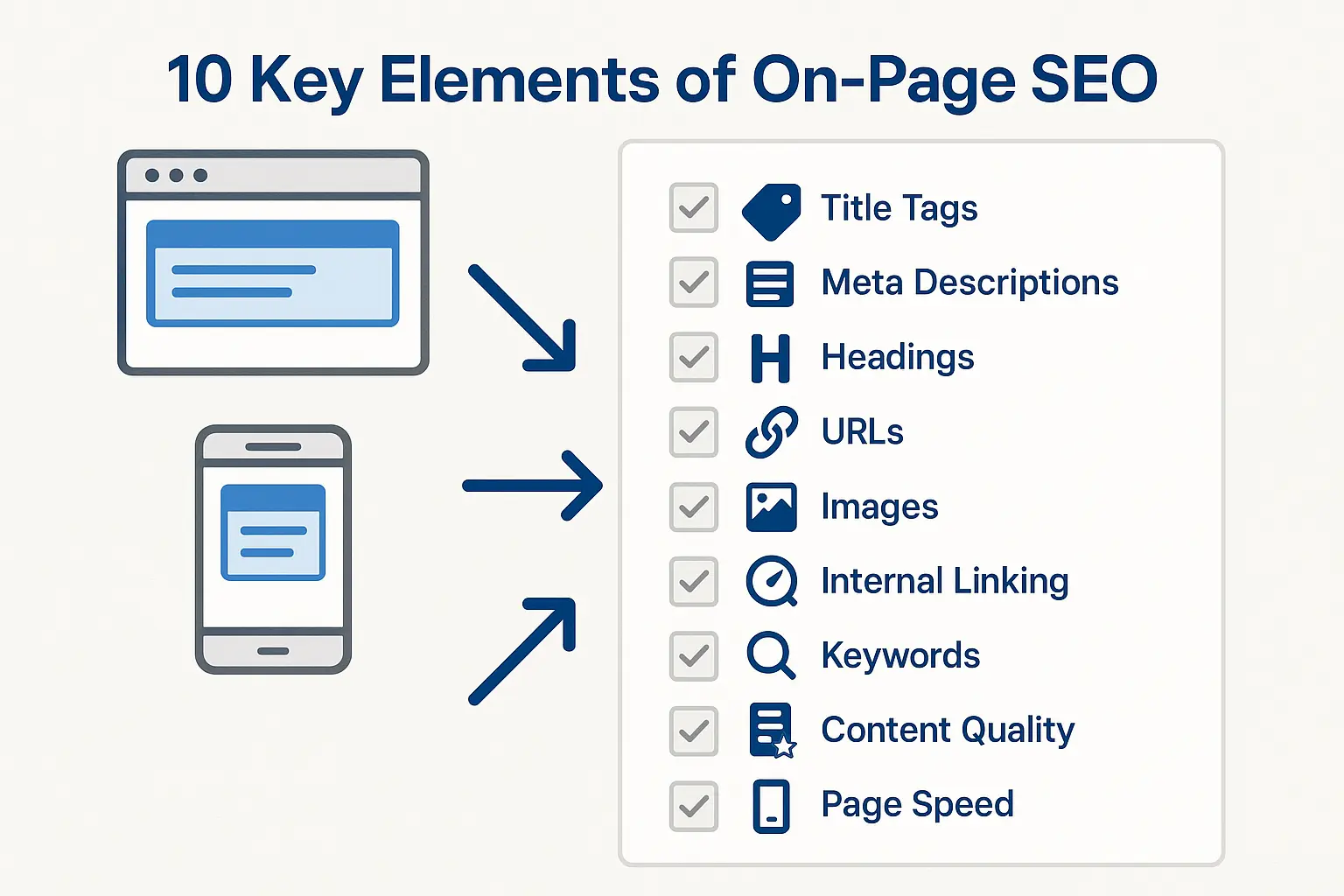
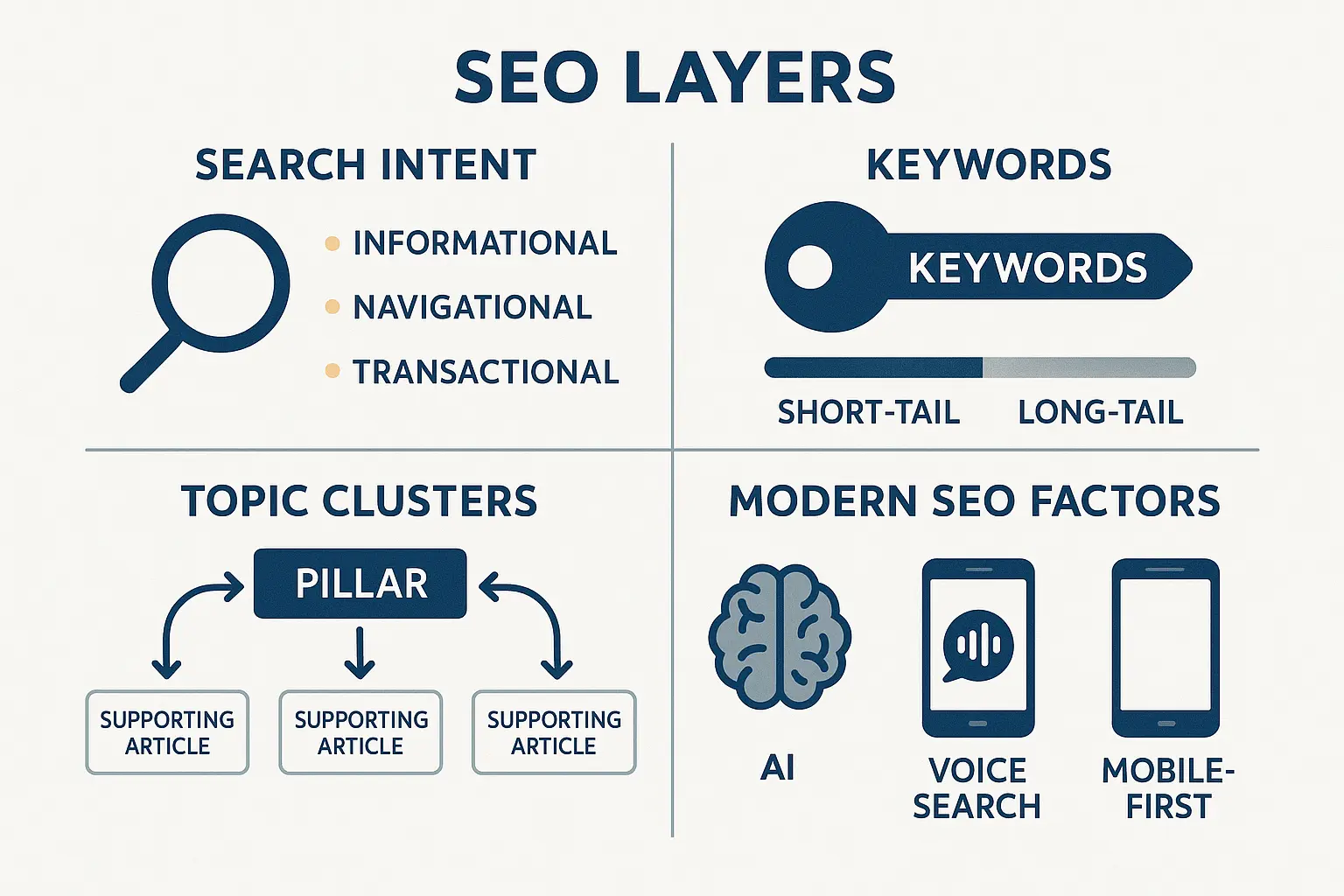
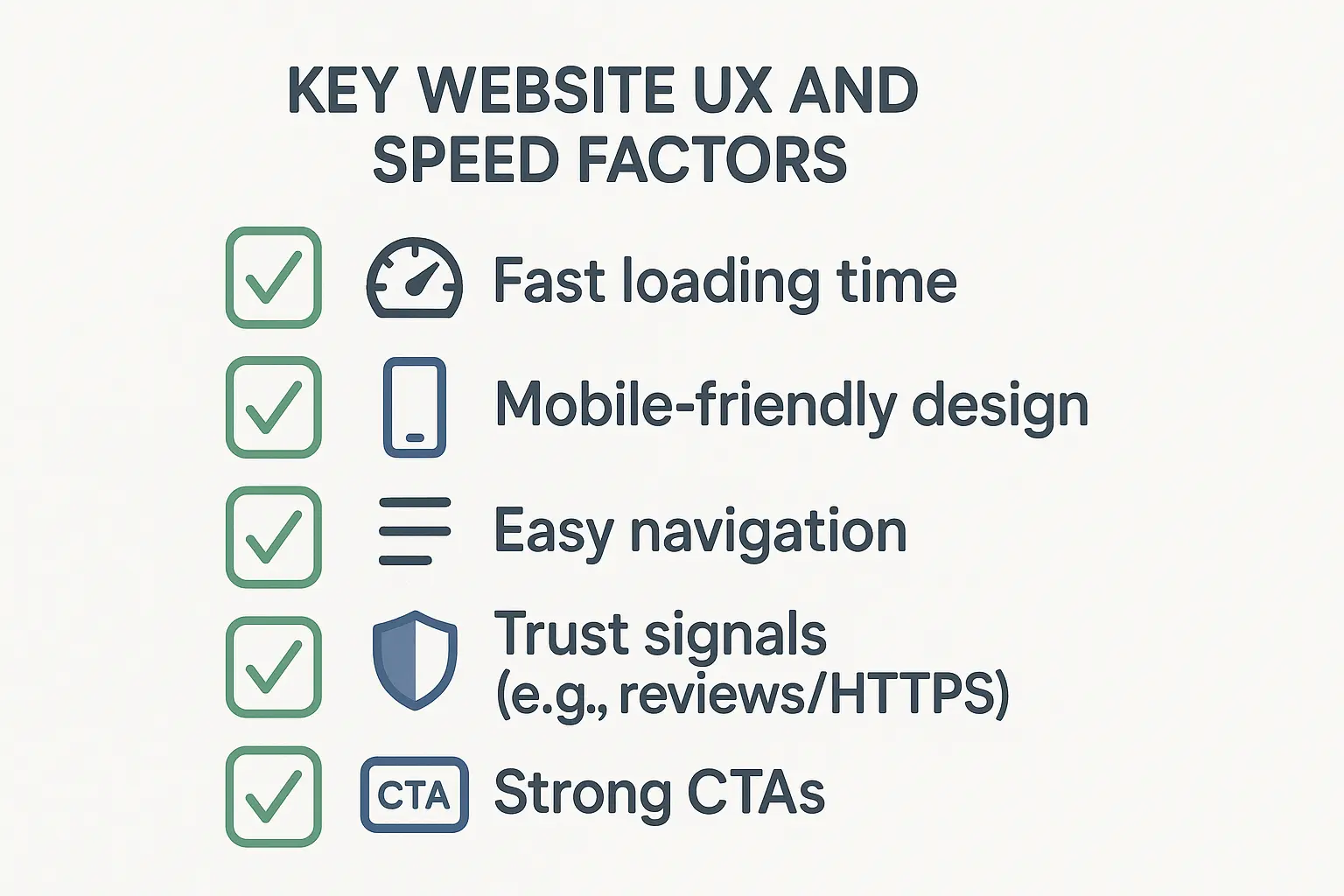
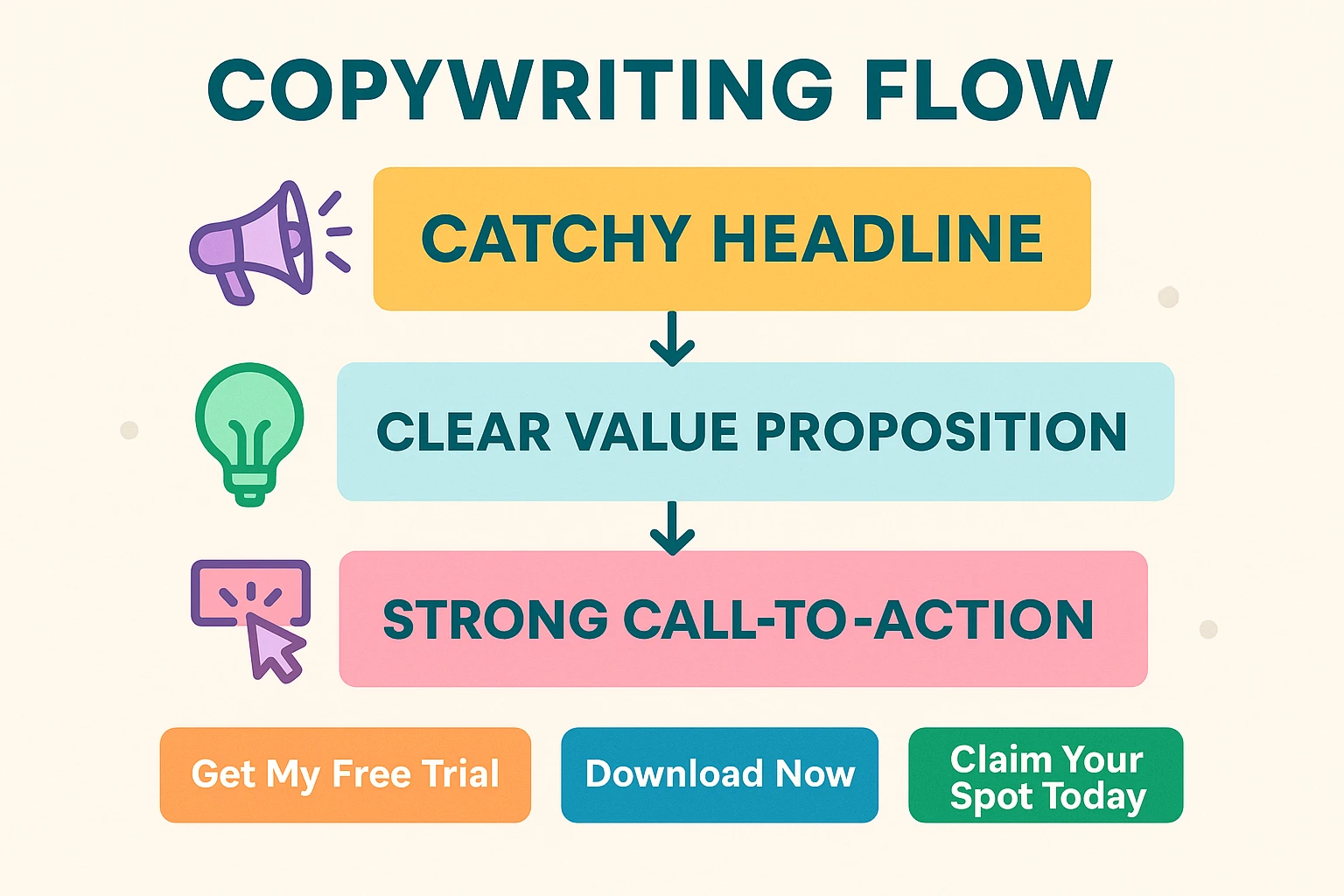
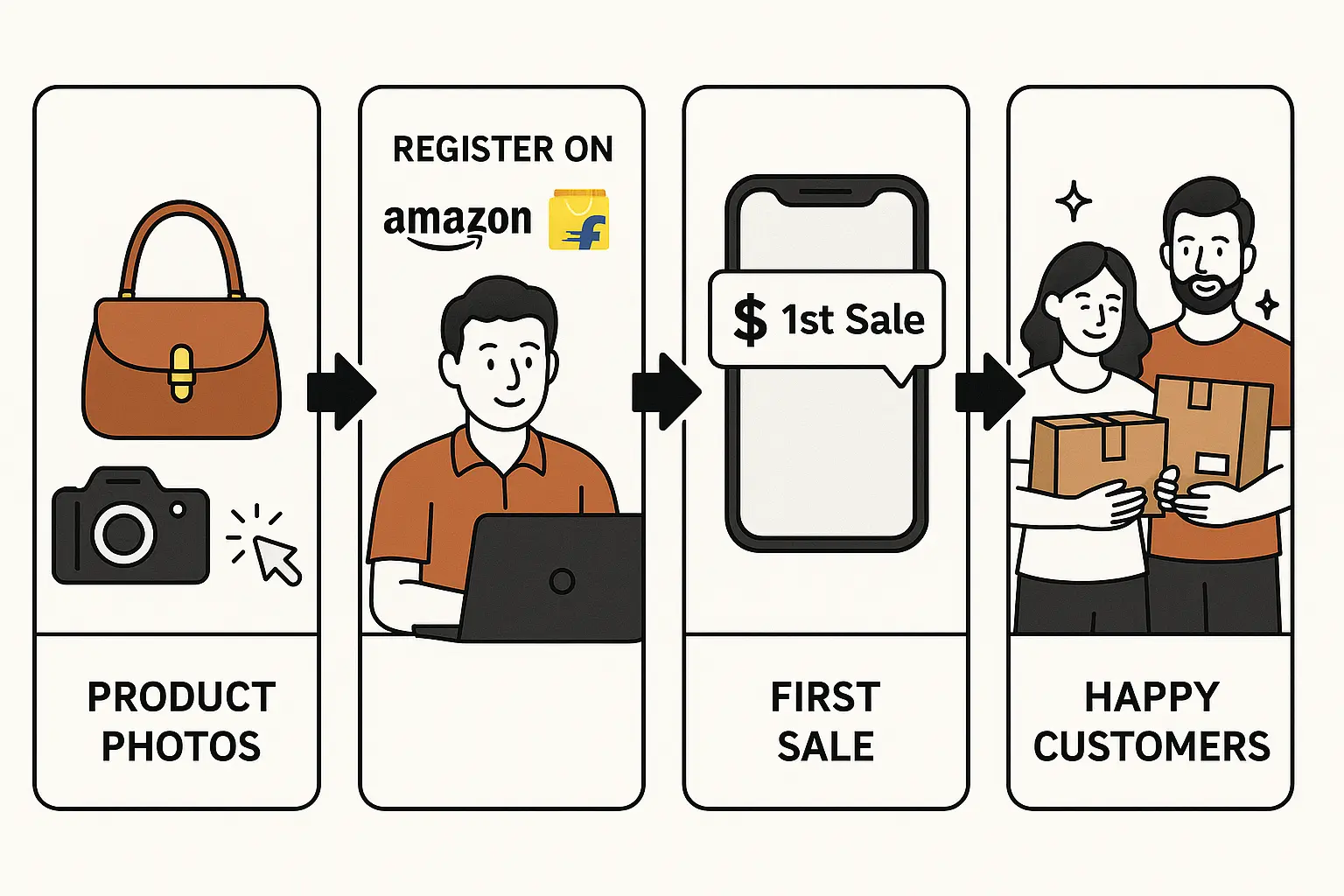
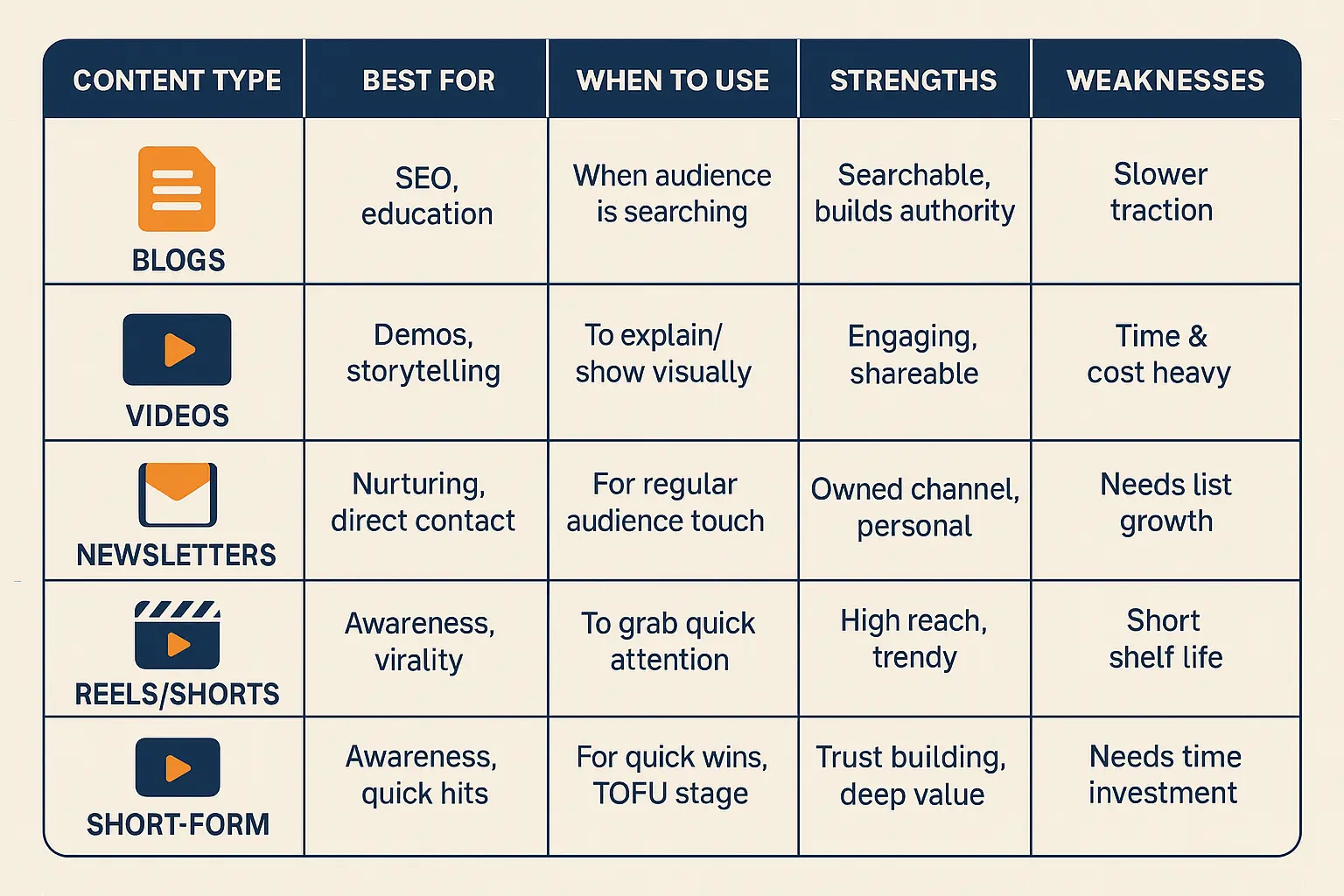


No comments yet. Be the first to comment!